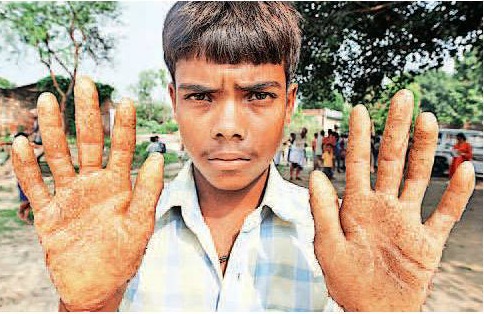Following media reports about arsenic contamination in Ballia, and a complaint addressed by the people of Ballia to the Ministry of Rural Development, a National Level Monitor was requested to enquire into the issue of water quality.

The mandate of the enquiry was as follows:
- Verify whether the 103 (of 229) water quality affected habitations that have been reported as covered are actually functional and providing arsenic free water
- Verify, with actual visits, whether the drinking water supplied in these 103 habitations has been tested for arsenic content.
- Check whether 100% public drinking water sources have been tested for arsenic contamination.
- Inspect the status of the existing district water testing laboratory in Ballia District.
- REport on the status of the 9 ongoing schemes, and also the 3 ongoing schemes taken up during 2010-11.
- Elaborate the plan of action by the UP Jal Nigam to cover remaining arsenic affected habitations.
Methodology: Mr.Dixit, the NLM, vsited the villages with the complainant and the Jal Nigam officials and engaged in discussion with the residents. Randomly selected water sources and water supply schemes were also inspected. The district testing laboratory was visited. Minutes of meetings held earlier, newspaper reports and official documents provided by Jal Nigam were also referred to.
Observations:
Presence of comtamination: It was confirmed that Arsenic is present in the drinking water supply of district Ballia. Despite this, there is not periodical monitoring of the water quality or health checkup of the residents. Several villagers exhibit symptoms of arsenic induced disease. Some families also reported deaths, which were confirmed by newspaper reports.
Status of drinking water supply: The 5 randomly selected water supply schemes are not satisfactory. The pipes being laid on the ground, are susceptible to bursting, causing heavy leakage. This situation was also reported by the villagers interviewed. There is no community outreach by the Jal Nigam. The officials have not visited the villages to either supervise the situation, or listen to the greivances of the villagers.
Status of the district water testing laboratory: The laboratory at Ballia was inspected and found to be in an extremely unsatisfactory condition. There is only one person working there. In addition, the laboratory is insufficiently stocked with a few instruments obtained in 2000. There has been no maintenance or standardization done of these instruments; their dusty state indicates that they have not been used. Most testing is done by 'visual methods' which is not an accepted method.No books on standard methods were found in the library.
Investigation about the alleged engineer-contractor nexus: Neither testimonies or proof was obtained about the allegations made by the residents. However, people confirmed it off the record. In two villages, Rajpur Ekauna and Dalan Chhapra, people were warned against saying anything in the presence of the investigation team.
Maintenance of the Arsenic removal units (ARUs): The allegations made by the complainant have been found to be true. None of the ARUs were performing as expected. The maintenance was extremely poor, and the operator was also not present.
Recommendations: The NLM's recommendations have been organised into three categories:
- Health checkups and public participation: Periodic monitoring of the resident's health is to be conducted. In addition, awareness camps are required to be organised annually.
- Incentives and penalties: It is suggested that the contractor be given a financial incentive to complete assigned work on time. Conversely, a fine is to be imposed for delay in completion of work. The actual amount of incentive/fine may be decided by a committee comprising of officials from the central and state levels as well as outside experts.This committee will also judge the work.
- Accountability: The contractor is to be held responsible for the quality of work ,and for repairs for a number of years, which is to be decided by the earlier mentioned committee.
In addition to these, a set of recommendations for the Ballia district water testing laboratory are also attached. The NLM further states that iron and fluoride problems are often associated with arsenic. Water samples also need to be tested for these contaminants.
Detailed visit reports are also included in the report. Copies of records available with the water testing laboratory and the jal nigam, minutes of the meetings conducted to discuss arsenic contamination, and newspaper reports referred to are attached.
Download the entire report below:
/articles/investigation-and-assessment-report-arsenic-drinking-water-sources-and-related-problems